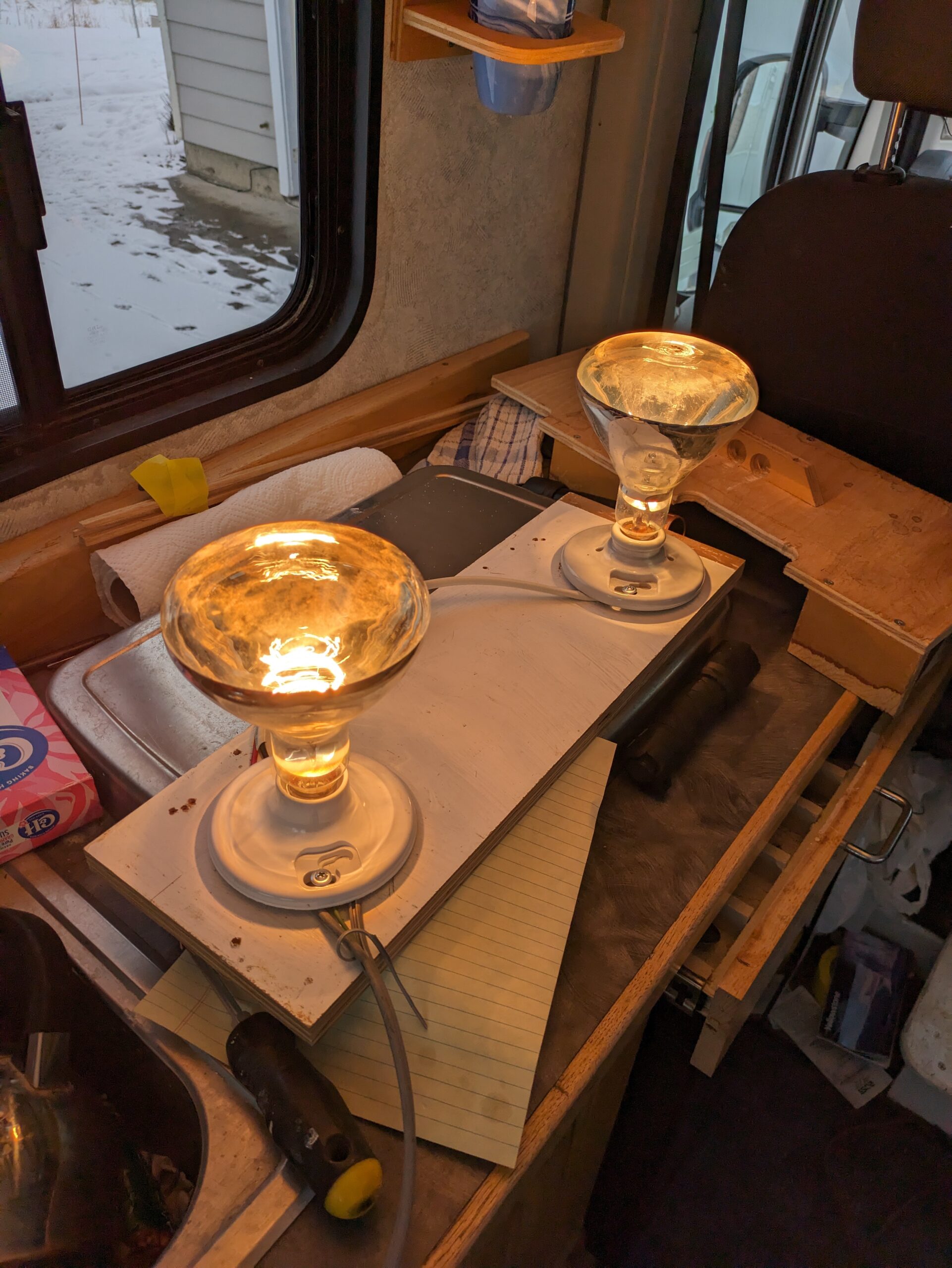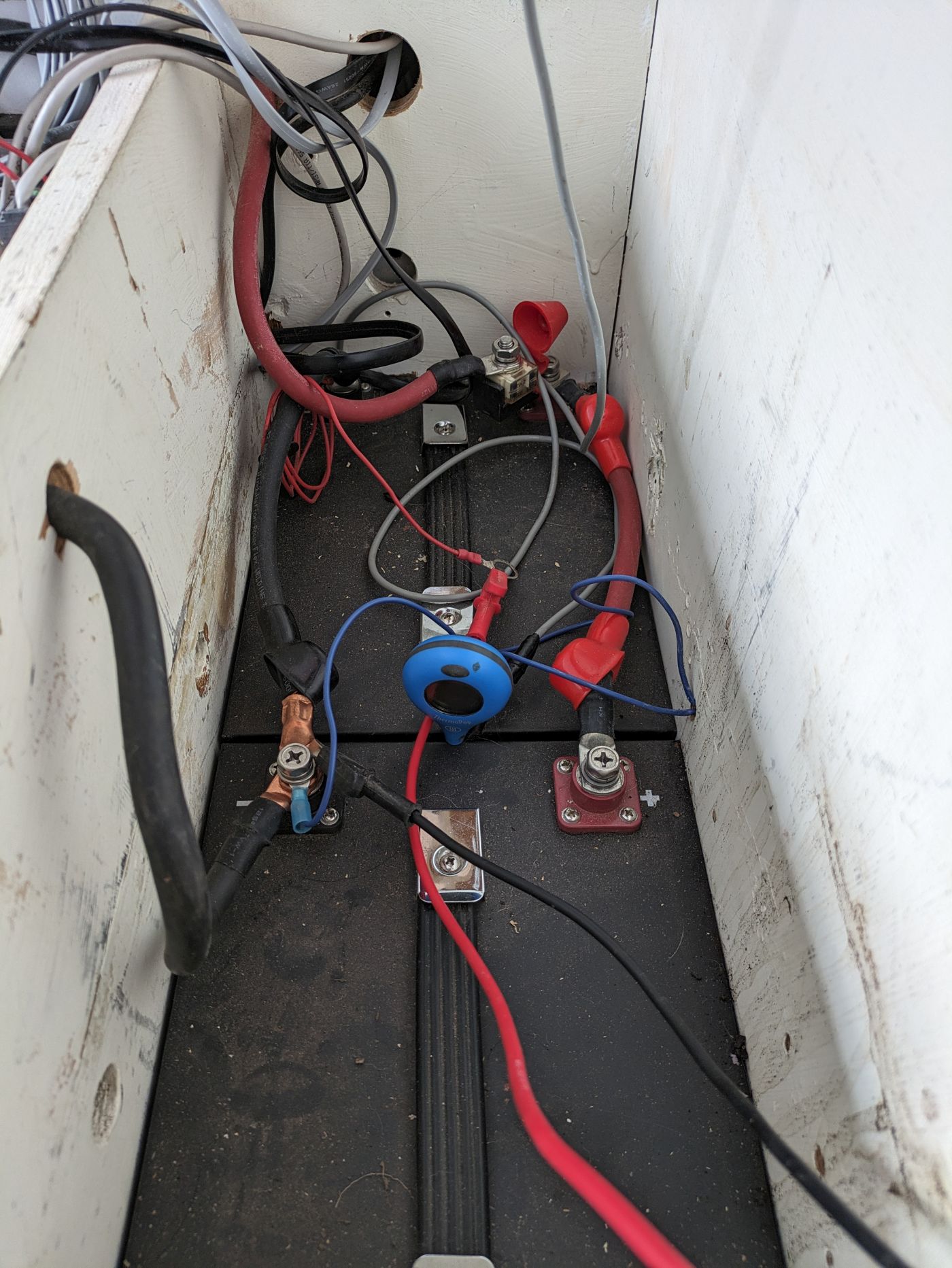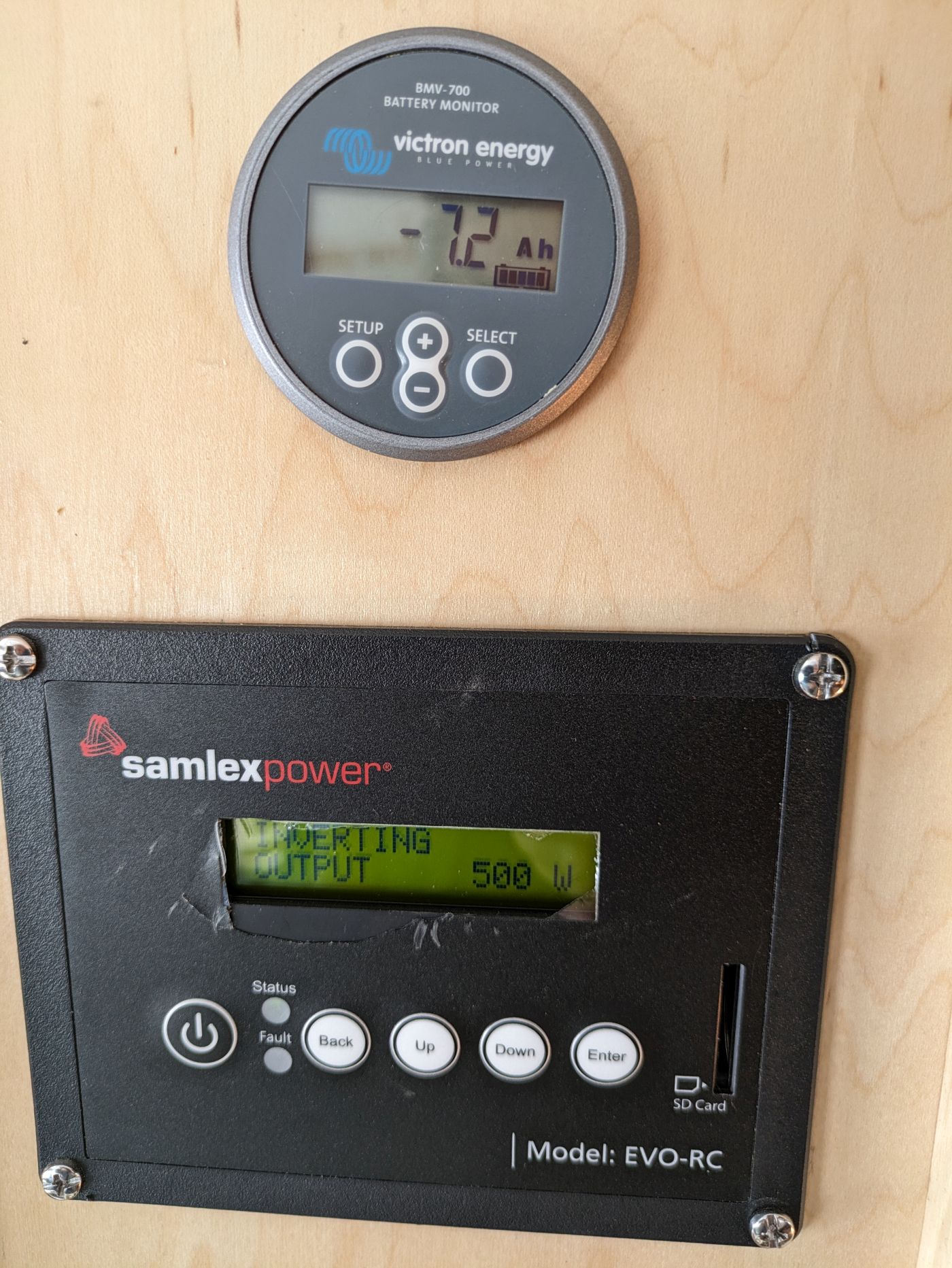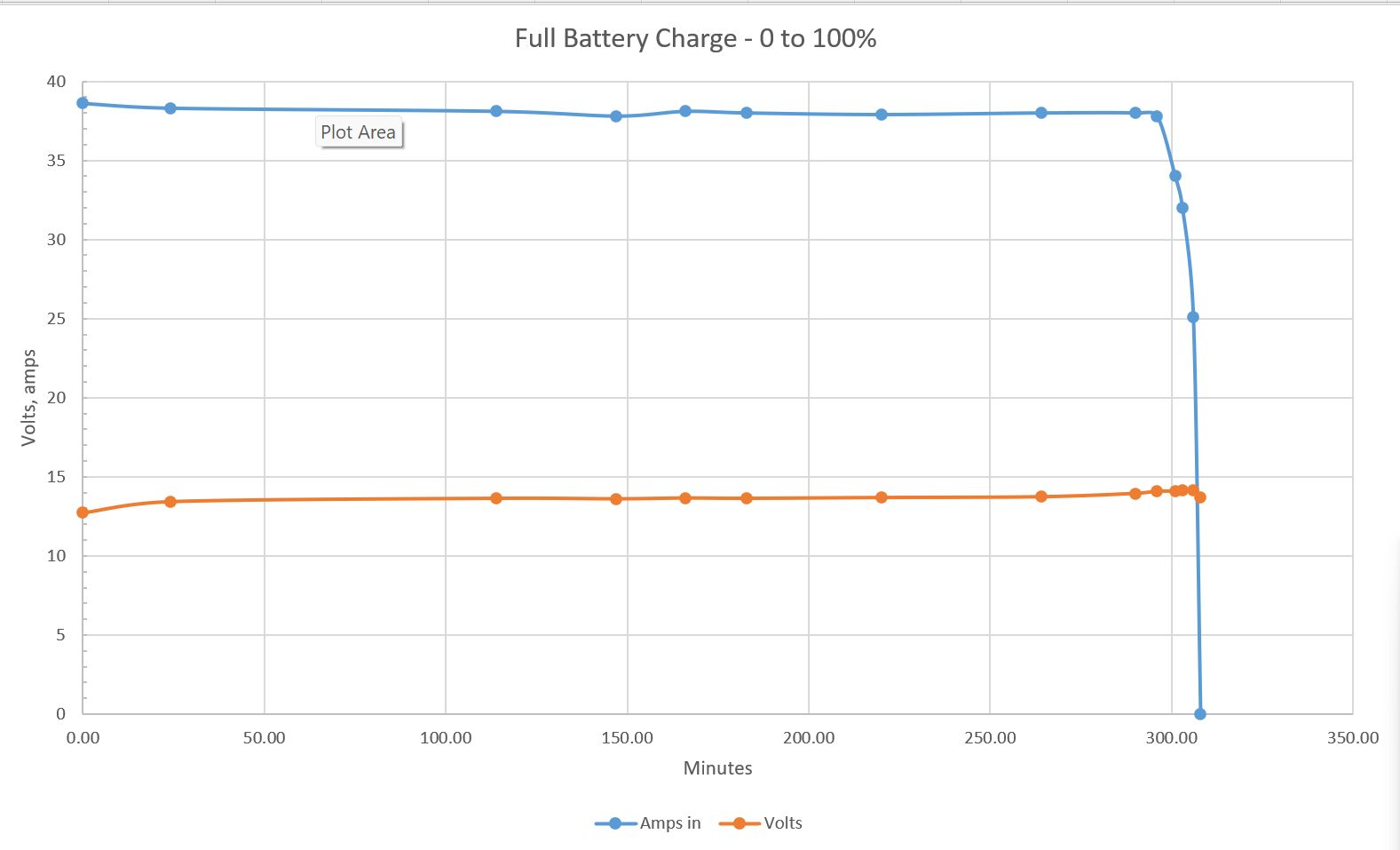About a month ago (Jan 2024), we had a bit over a week over very cold weather. Most night time lows at -25F to -33F and one record breaking night at -45F Brrr!
I had intended to bring my LiFePo4 batteries inside before this, but laziness won out and the batteries sat in the van in the driveway through the whole event.
So, this turns out to be a laziness enabled test of LiFePo4 batteries cold weather tolerance.
The batteries are a pair of SOK 100 amp-hr batteries. They have cold weather charging protection, but no built in battery heater. They do not have the new bluetooth BMS. The SOK’s have metal cases and can be taken apart without any special tools. The batteries are a bit over 2 years old.
To try to see if the batteries were damaged by the cold weather, I decided to do a capacity test to measure the how many amp-hrs the batteries can deliver compared the advertised capacity of 200 amp-hrs. It would have been nice if I had done a test when I first got the batteries to compare to, but I did not. But, a lot of capacity tests on the internet have shown these SOK batteries tend to test to a bit over the 200 amp-hrs when new.
There is a bunch of stuff below on how I did the test, but the bottom line is that the measured capacity is 195.3 amp-hrs. So, it appears that the exposure to -25F to -45F for a week did not have much of any effect on the batteries. The 195 amp-hrs is about what I would expect just due to aging for 2 year old batteries. Maybe I’m missing something here?
I did not do a maximum load test, but the capacity test put a 50 amp load on the batteries for hours, so they seem to be doing OK in this area too.
How the capacity test was done:
I charged the batteries up to very close to 100% (charger voltage 14.15 V, esting 13.7 V), then put a 50 amp load (0.25C) on the batteries draining them to very close to 0% SOC.
I used a Victron battery monitor to track the amp-hrs used, but also took some volt, amps and temperature readings along the way as a check. The 195.3 amp-hrs is what the Victron showed at the end of the test. I did not go to BMS shutdown on either end, so there may have been another amp-hr or so, but I think I came quite close on both ends.
I was having trouble finding a good load to get to around 50 amps, and then remembered a couple of 250 watt incandescent lamps in my junk box, and these worked fine and provided very good lighting and some space heating in the van 🙂

The lamps provided 500 watts of load, but the inverter inefficiency, the load on the battery was about 620 watts.
The morning of the test, the battery temp was about 30F, which is too low to charge. I turned on the 12 watt heating pads I have under each battery and turned on the van propane furnace and waited for the battery temp to come up to 53F. I measured battery temp with a probe thermometer inserted between the two batteries, which are pressed right up against each other.

The thermometer is the blue gadget with the probe extending about 4 inches down. The batteries a close enough to each other that it took some force to get the probe in between them. I think the metal cases conduct heat well enough to get a reasonably close battery temperature.
The discharge test ran for about 4 hours with the battery temp going from 53F up to 76F.

Victron battery monitor and the inverter remote panel.
This is the volts/amps plot for the discharge.

Blue is current flow in amps. Orange is battery voltage.
The current varies a bit in part because the van furnace was on part of the time and adds about 2 amps when on.
The batteries supported the full 50 amp load up to almost 4 hours. At this point the inverter shut down due to low battery voltage. I then found some smaller loads to get all the way down to zero remaining capacity.
Conclusions:
It looks like at least these LiFePo4 batteries don’t seem to be bothered by very low temps much.
I’m probably going to continue to leave my batteries in the van during cold spells, but I’m not encouraging anyone else to do this.
I have read that some battery makers put a low temp limit on their batteries not because of the cells, but to protect the plastic case. This does not make a lot of sense to me in that it seems like half my car is made of plastic and it sits out in the cold weather with no visible effects on the plastic. Maybe someone has some wisdom on why one should limit the battery exposure to very cold temps?
Of course you don’t want to try to charge the LiFeP04 batteries when the battery temp is under 32F.
While the outside temps were as low as -45F, the battery compartment in the van probably never got that cold as van windows have some solar gain during the day and the inside of van temp never gets quite as cold as the ambient. We have a cold night coming up, and I’ll log the battery compartment temps vs ambient temps and add this to the post. Based on past tests, I’m guessing the battery compartment temp will be about 10F above the ambient low.
Gary
